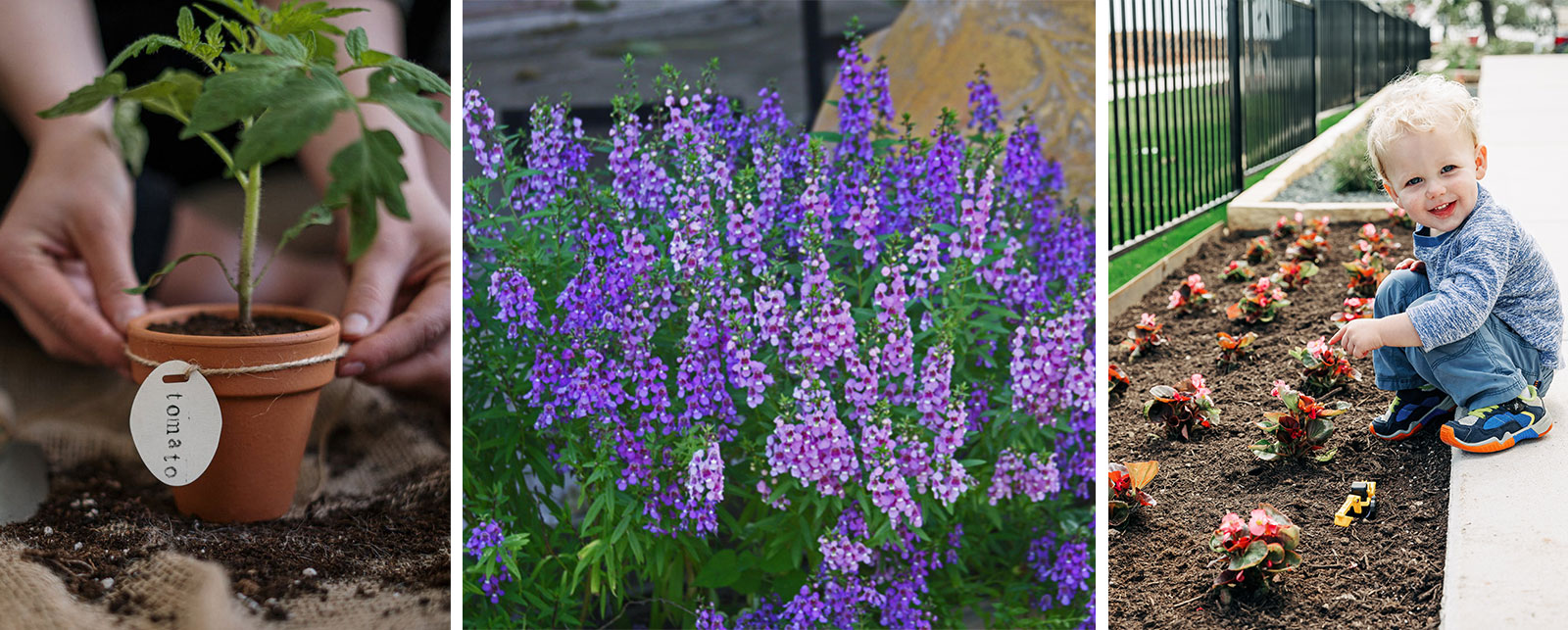
Backyard Spring Gardening Tips for Central Texas
Apr 5, 2022
From peppers to petunias, artichokes to asters, tomatoes to tea roses, April is the time to get growing in the Texas hill and lake country. Our climate is ideal for both abundant blooms and a bounty of veggies to create a feast for your eyes…and your table.
Here are some tips to help you get growing in your new home here in Gregg Ranch. Be sure to grab some supplies from the Highway 281 Nursery & Flowers just up the road, or at the garden centers at the H-E-B, Lowe’s, Home Depot and a variety of other nearby nurseries.
Go Native
If you are looking for a sure-fire way to find the perfect plant for your garden, let mother nature be your guide. Master gardeners Robert and Sheryl Yantis with Yantis Lakeside Gardens say native plants are well adapted to the alkaline soils of central Texas and are well adapted to both harsh temperature and minimum water usage.
One of their favorites is the Blackfoot Daisy. The lovely white flowers have a long bloom period and require infrequent watering. Another favorite is Salvia, although we should say favorites because there are many varieties. Try mealy cup blue, big red sage and salvia greggii. Tropical sage is an annual pink and red sage that easily reseeds itself. Robert and Sheryl say the advantage of planting sages is that they are usually very resistant to deer, and most sages have long blooming periods.
Everything Is Coming Up Roses
Roses are a bit more challenging than many native plants, but not impossible. Robert and Sheryl suggest heirloom varieties or specially bred hybrids. Chamblee Rose Nursery in Winona is a five-hour drive from Gregg Ranch and The Antique Rose Emporium in Independence is a three-hour drive, both sell and have also developed series of tough roses by breeding some of their old roses. Both also have online ordering options.
Amazing Annuals
Looking for some show-stopping bedding plants? Lots of annuals thrive in Central Texas.
Mexican Heather is a multi-stemmed upright spreader that likes some afternoon shade in the heat of the summer. Angelonia looks like mini snapdragons, with white, pink, purple or lavender blooms. Zinnias are an old-fashioned summer favorite that take full sun and come in a variety of colors. The Laura Bush petunia also takes full sun and brings a taste of tradition to your garden. Discover more Texas superstars: at:https://issuu.com/gotexan/docs/tda_superstar_2020_0520?fr=sNjU3ZjkxMjg2
Grow Your Veggies
We are nearing the end of planting season for many summer vegetables, but you still have time. Set out your pepper and tomato transplants until about mid-April. And if you miss spring planting, don’t worry, you can work on a fall crop by planting again in late June or early July, but they will need some shade until established. Early April is also prime planting season for melons, cucumbers, eggplants and pumpkins. Vegetables do need lots of organic material, peat moss, compost and composted manures are all excellent and can be added in at a rate of about one part organic material to three to four parts soil.
Herbs also do well in the Hill Country. They can be grown in containers, water frequently, or plant directly in the ground. Nasturtiums, chives, catnip, comfrey, fennel horseradish, feverfew, oregano, thyme, rosemary, lemon grass and peppermint all do well.
Get blooming!
Located in charming Marble Falls, Texas this 240-acre master-planned community is northwest of Austin and is anticipated to be home to approximately 700 single-family and 250 multi-family residences. A central community area with an outdoor pool, ramada, barbeque area, shaded play area and bocce ball and horseshoe pits are planned. Gregg Ranch outdoor amenities will also include 5.5 miles of jogging and biking trails throughout the community, plus a dog park. The community is conveniently located at the intersection of State Highways 281 and 71, and is a short drive to Lake Marble Falls, Lake LBJ and the famed Texas Lake and Hill Country. Visit http://greggranch.com/ to learn more.
On-line resources: